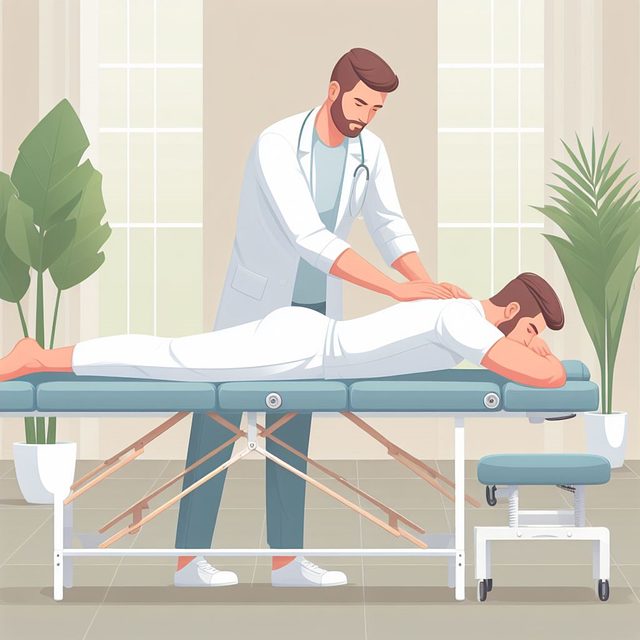Cold water immersion therapy, or cold plunge therapy, involves submerging in water below 59°F to unlock various health benefits like reduced inflammation, improved circulation, better sleep, and mental clarity. Athletes and fitness enthusiasts use it for enhanced performance and recovery. Before trying a cold plunge, prepare with gradual cold exposures and mindfulness practices. Post-immersion, employ rewarming techniques, dynamic stretching, and light exercise to maximize benefits. This ancient practice offers powerful cryotherapy alternatives, appealing to both beginners and athletes seeking improved physical and mental well-being.
“Unleash your body’s potential with Cold Water Immersion Therapy—a powerful practice gaining traction as a game-changer in athletic recovery and overall wellness. This ancient technique involves brief exposures to cold water, offering a myriad of benefits, from reduced inflammation to enhanced performance.
In this comprehensive guide, we’ll walk you through preparing both your body and mind for your first cold plunge, explore the science behind its effectiveness, and provide post-immersion techniques to maximize health benefits, making it an ideal resource for athletes seeking cryotherapy alternatives.”
Understanding Cold Water Immersion Therapy: Unlocking the Practice
Cold water immersion therapy, often referred to as cold plunge therapy or ice bath therapy, is an ancient practice gaining modern popularity for its diverse health benefits. This therapeutic technique involves submerging oneself in cold water, usually below 59°F (15°C), for a short period. Athletes and fitness enthusiasts are increasingly incorporating cold water immersion into their routines to enhance performance and recovery.
Unlocking the practice means understanding how cold exposure stimulates your body’s natural healing mechanisms. When you immerse yourself in cold water, it triggers vasoconstriction, narrowing blood vessels to preserve core temperature. This process improves circulation when you emerge, enhancing oxygen and nutrient delivery to muscles and tissues. Additionally, cold water therapy is known to reduce inflammation, boost the immune system, and promote better sleep—all of which contribute to overall well-being and athletic resilience. As a cryotherapy alternative, it offers a natural way to support physical and mental recovery without the use of extreme temperatures.
Preparations for Your First Cold Plunge: Body and Mind
Before your first cold plunge, it’s vital to prepare both your body and mind for this invigorating experience. Cold water immersion therapy, also known as cold plunge therapy or ice bath therapy, offers a range of cold water health benefits such as reduced inflammation, improved circulation, and enhanced mental clarity. However, it can be an intense transition for the body and mind, especially for beginners.
To maximize the advantages of cold exposure therapy, prepare by gradually exposing yourself to cold temperatures beforehand. Start with cooler showers, move on to ice packs or cold compresses, and even try cold water swimming or dipping your feet in ice water. Mentally, practice mindfulness and deep breathing exercises to help you stay calm and focused during the plunge. Visualize yourself successfully completing the session while keeping a positive mindset. This preparation will not only ease the physical shock but also enhance your overall experience, making it more beneficial and enjoyable.
The Science Behind Cold Water Therapy: Benefits and Recovery
Cold water immersion therapy has gained popularity as a powerful tool for both physical and mental well-being. The science behind this ancient practice is based on exposing the body to cold water, typically through short immersions or cold plunges, which triggers a series of beneficial physiological responses. During these sessions, the sudden cold temperature causes blood vessels to constrict, reducing blood flow to the extremities and core. This prompts the body to initiate a protective response by increasing circulation when the cold exposure ends, leading to improved blood flow and nutrient delivery throughout the body.
For athletes and active individuals, cold water therapy offers several advantages. It can accelerate recovery after intense workouts by reducing muscle soreness and inflammation. The cold temperature helps flush out metabolic waste products, providing a faster healing process for overworked muscles. Moreover, regular cold plunges have been linked to enhanced mental clarity and improved mood, making it an effective stress reliever and a game-changer for mental health support. These techniques are considered effective alternatives to cryotherapy, offering similar benefits without the same level of extreme cold exposure.
Post-Immersion Techniques: Maximizing Cold Water Health Benefits for Athletes
Post-immersion techniques play a crucial role in maximizing the health benefits of cold water therapy, especially for athletes looking to enhance their performance and recovery. After completing a cold water immersion session, whether it’s a cold plunge or ice bath, engaging in specific recovery practices can further optimize results. One effective strategy is gradual rewarming, which involves slowly raising your body temperature post-immersion. This can be done by stepping into a warm shower or soaking in a hot tub for a few minutes to promote blood circulation and help your muscles relax.
Additionally, stretching and light exercise after cold water exposure can aid in muscle recovery. Dynamic stretching, in particular, is recommended as it prepares the body for movement and improves flexibility. Athletes might also consider incorporating active recovery sessions, such as light yoga or swimming, to enhance circulation and promote faster healing. These post-immersion techniques work synergistically with cold water immersion therapy, ensuring athletes can reap the full benefits, including reduced inflammation, improved endurance, and accelerated muscle repair.
Cold water immersion therapy, or cold plunge therapy, can be a powerful tool for enhancing athletic performance and overall well-being. By understanding the science behind it, preparing both body and mind, and utilizing effective post-immersion techniques, you can unlock the numerous benefits of cold water therapy, including improved recovery and reduced inflammation. Consider this practice as a game-changing alternative to traditional cryotherapy, offering a natural way to boost your health and push your limits. Embrace the chill and experience the transformative power of cold exposure therapy.
